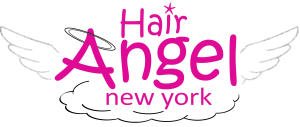What You Need to Knowmindsaw2018-11-26T21:00:30+00:00
THE LIFE CYCLE OF A HEAD LOUSE
The life cycle of the head louse has three stages: egg, nymph, and adult.
-
Nits – Nits are head lice eggs. They are hard to see and are often confused for dandruff or hair spray droplets. Nits may be found at the base of the hair shaft nearest the scalp (1). They are 0.8 mm by 0.3 mm, oval and usually they appear to be white / yellowish gold. Nits take about 1 week to hatch (range 6 to 9 days).
-
Nymphs – The egg hatches to release a nymph (2). The nit shell then becomes a more visible dull yellow and remains attached to the hair shaft. The nymph looks like an adult head louse, but is about the size of a pinhead. Nymphs mature after three molts (3,4) and become adults about 7 days after hatching.
-
Adults – The adult louse is about the size of a sesame seed, has 6 legs (each with claws, yikes), and is tan to grayish-white (5). In persons with dark hair, the adult louse will appear darker. The females can lay up to 10 nits per day. Adult lice can live up to 30 days on a person’s head. To live, adult lice need to feed on blood several times daily. Without blood meals, the louse will die within 1 to 2 days off the human host.
Percentage of the head lice culprits pass the infestation on to their; siblings, relatives and friends. 100% Average percentage of the time mothers/nannies contract head lice from their children. 80% Average percentage of the time fathers contract head lice from their children. 20% Head lice crosses all socioeconomic boundaries.
Head lice is one of the top 3 reasons why children miss school
Longer hair is more susceptible in contracting head lice
Head lice thrive equally in warm and cold climates
Although there is no absolute sure way to prevent your family from getting head lice, there are things you can do to lower your odds:
Teach your child to avoid sharing things that have been on or near anther child’s head, including hairbrushes, combs, hats, scarves, towels, helmets, etc.
Bag your child’s coat and hat or Make sure your child hangs up his or her coat on an individual hook, instead of throwing them in a pile with other class mates clothing.
Regularly clean things that your child’s head has direct contact with, such as car seats, pillows, head phones, etc., especially if they are sharing them with other children
Recognize the symptoms of head lice, which includes an itchy scalp and small red bumps or sores on the back of your child’s neck and scalp.
Belive it or not – Avoid “Group Selfies”
